There is a long history of harvesting plants to extract fibre, the well known ones are cotton and linen, perhaps hemp, jute, and sisal , but nettle was very well known and there evidence that it has been used at least for the last 3000 years, and possibly much longer, everywhere from Denmark to Ancient Egypt.
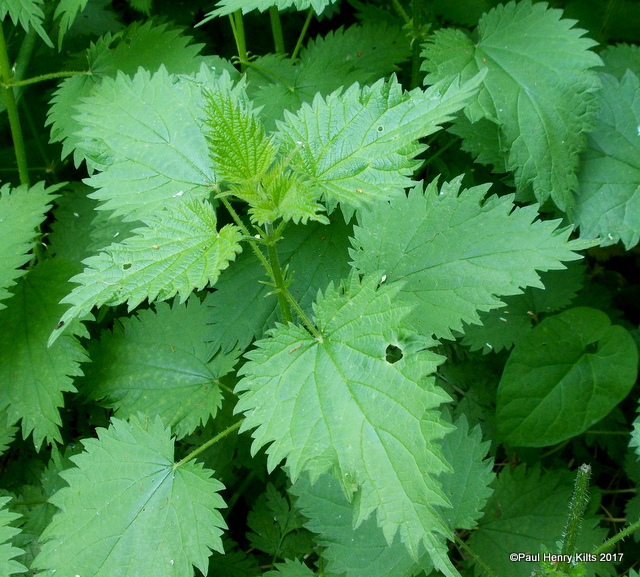
Nettles grow wild and don’t need any special treatment and survive in almost any soil. They grow tall, up to 5′ and are perennial and self seed very readily.

Harvesting often takes place in the autumn, stems are cut near the ground and the leaves rubbed off. Gloves are really needed – they are called stinging nettles for a good reason.

The stems are gathered together and left to rett on the ground for a few weeks allowing bacteria to start breaking down the woody parts of the stalks to reveal the valued fibre. The stems are then gently broken and the outer skin can be peeled off and the inner core removed and disposed of.
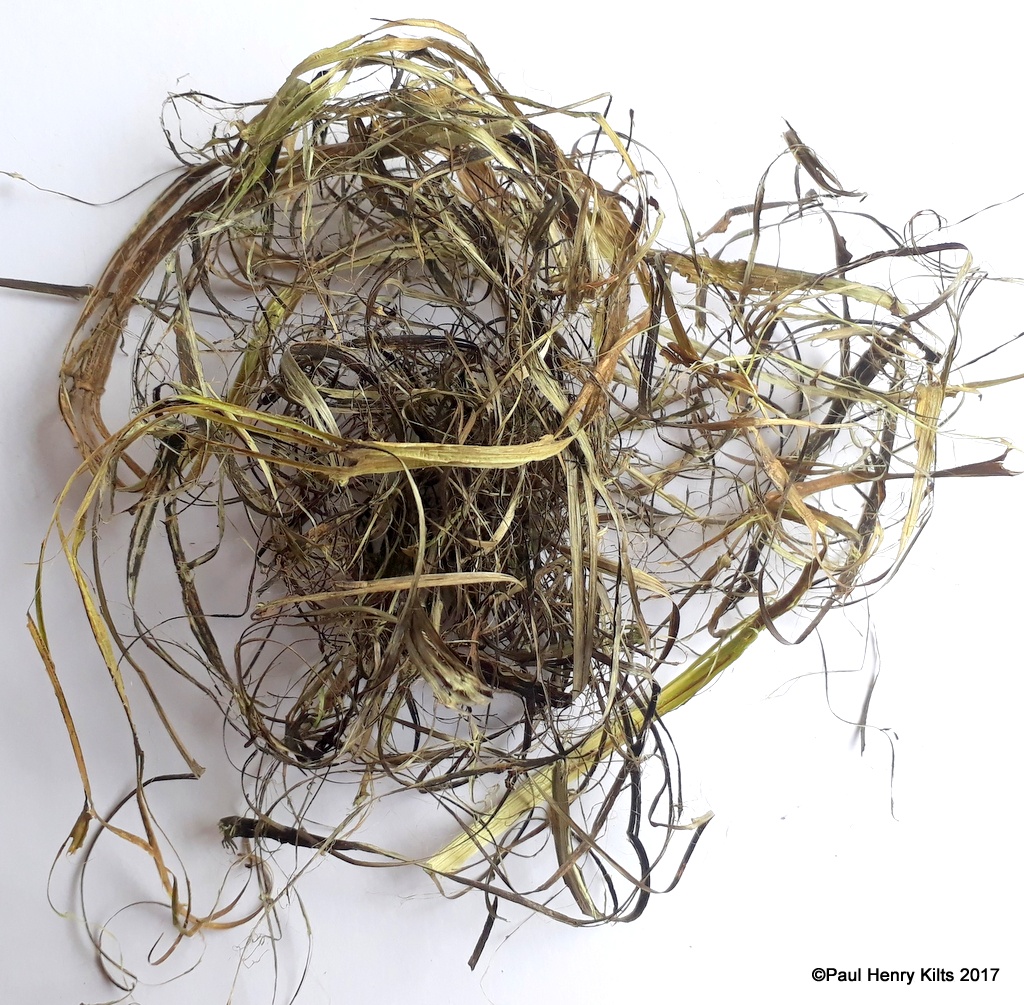
It will look like a mass of straw, but this is the important fibre, by scraping, flexing, rubbing between hands, and combing the fine fibres will be revealed, and can then be spun. If there are a lot of shorter lengths carding is probably a better idea, in the same way that rolags are created with wool.
There will still be a very definite green colour on the fibre during spinning and also shorter random bits of stem, it’s usually easier just to carry on than waste extra time with more processing, as the little bits will fall out either in the spinning or in the final washing. My favoured spinning is with a drop spindle, it’s easy to control especially for small quantities of fibre.
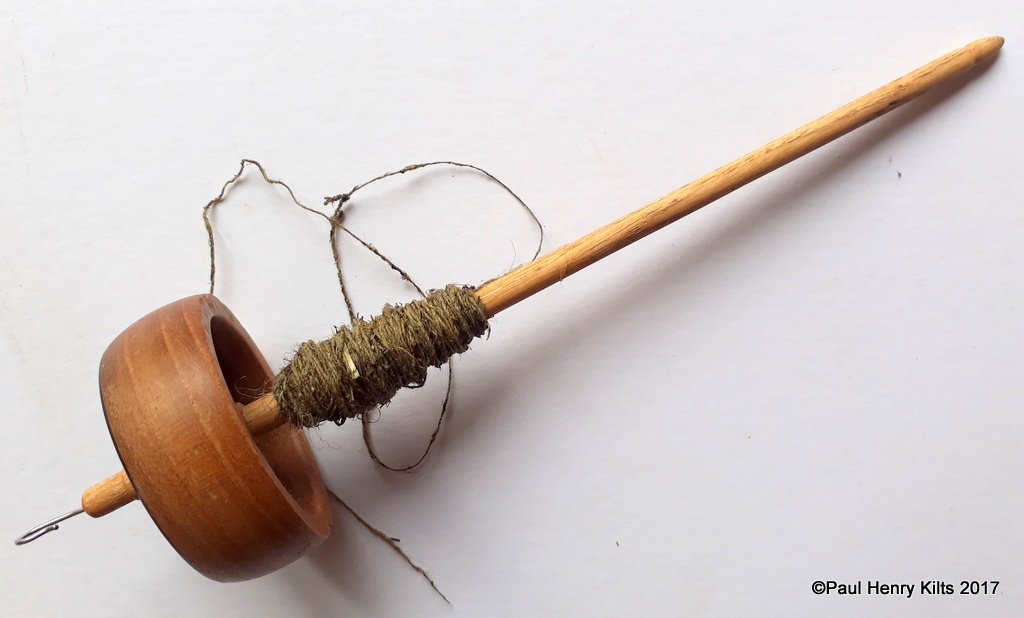
The fibre is fairly strong, but creating a 2 ply evens out any variations and makes a much more balanced final yarn. It will look fairly coarse with lots of small stem pieces, but they will disappear with the next step.
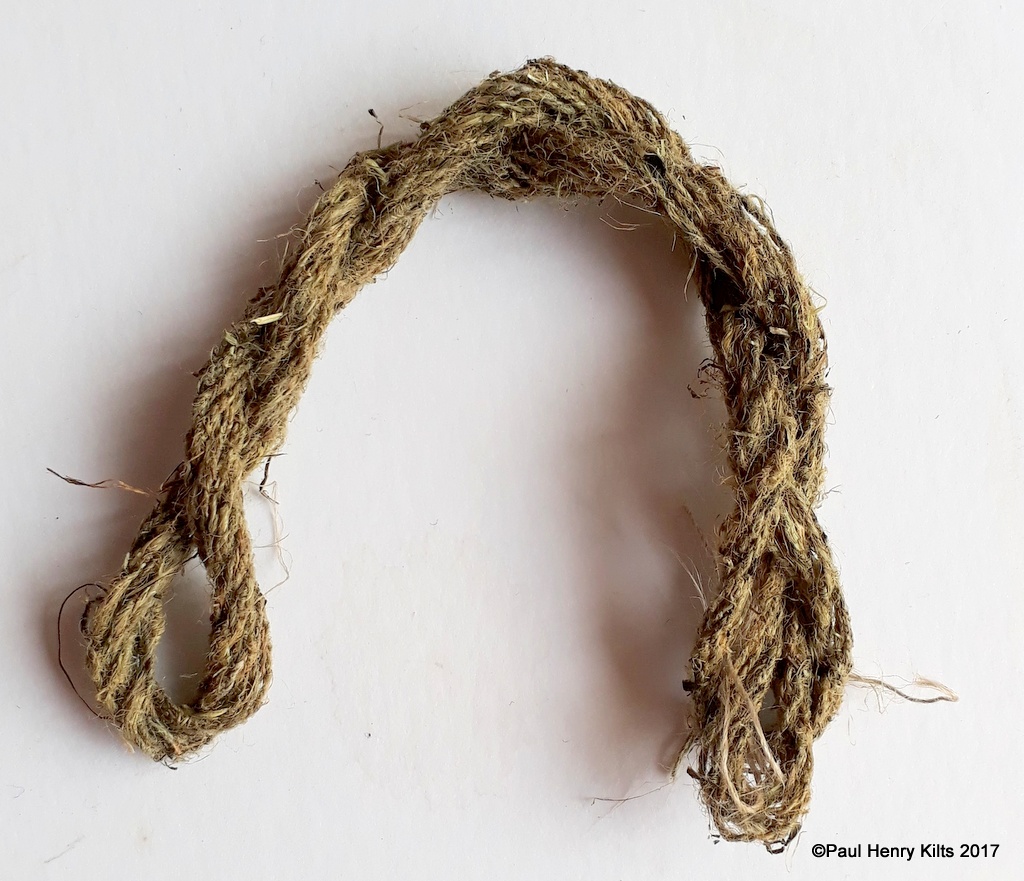
The skein needs to be washed before it is properly ready to use, it is boiled in a weak solution of washing soda for about hour, it’s easy to check on the progress, the yarn will lighten in colour, lots of the stray bits of stem will vanish, and yarn itself will become much softer. It will need to be washed at the end with some normal washing liquid and well rinsed, after it is dry , it’s ready to use.

There is a lot of work needed to gain a small amount of fibre,there is a huge amount of waste, but on the plus side it is essentially free to harvest,needs no special tools to convert the raw stems into fibre and it makes a very strong yarn, being very similar to flax and linen. I’d be very happy to make more given enough time, it’s certainly been a very useful project.
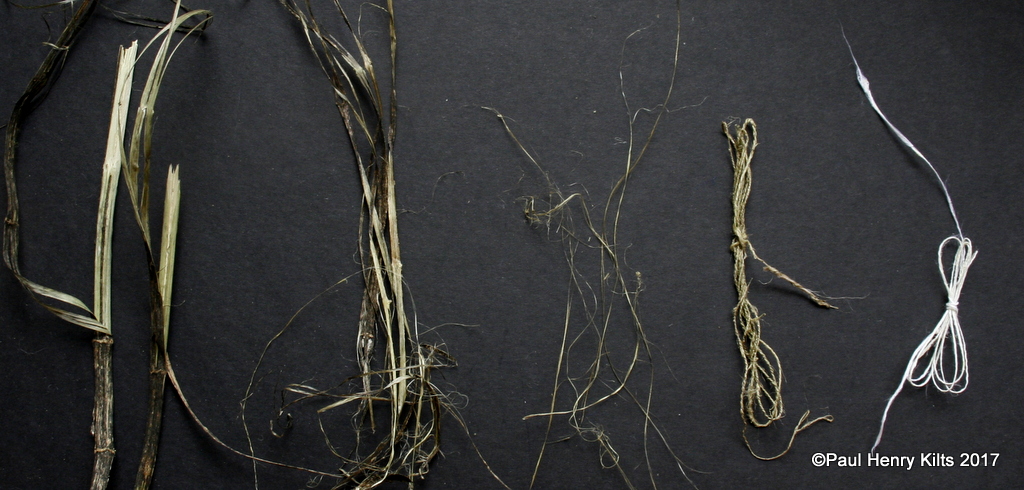

Thank you for this article.
Thx my friend!!
Thanks for the info. I want o gather enough to be able to knit myself a scarf!
thank you for your very interesting article, you have explained it in easy to understand and follow terms.
Fascinating stuff. Thanks for explaining it.